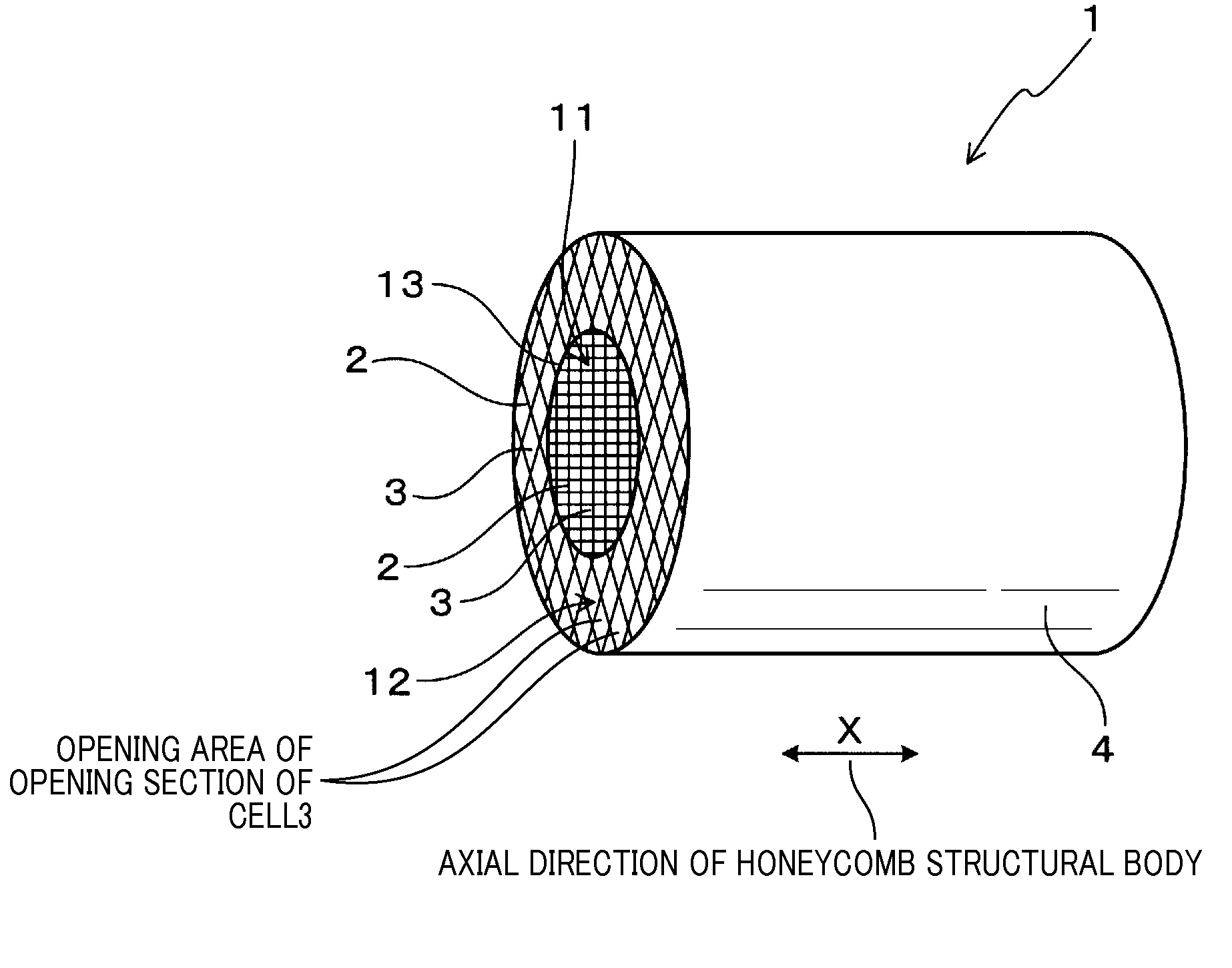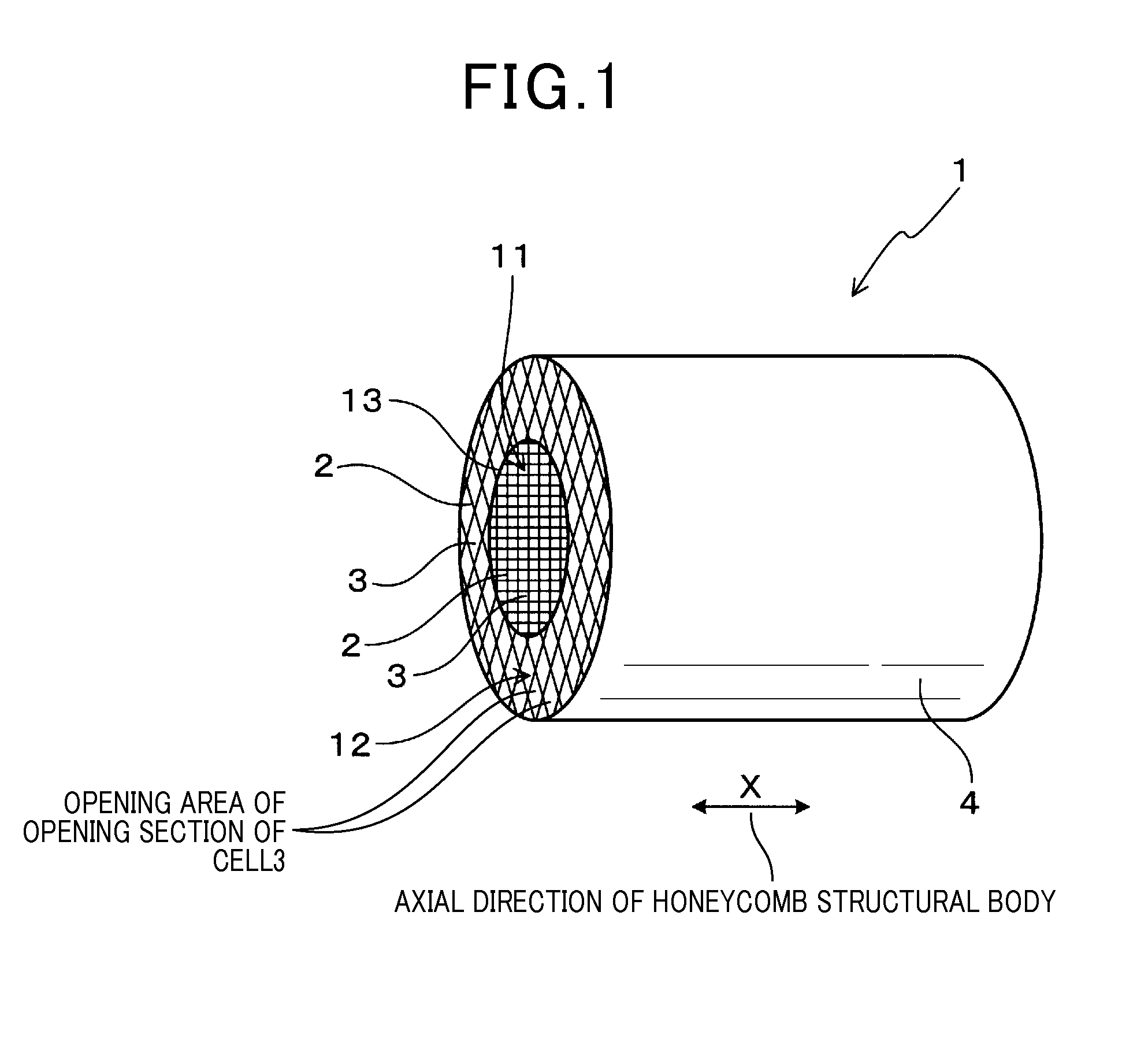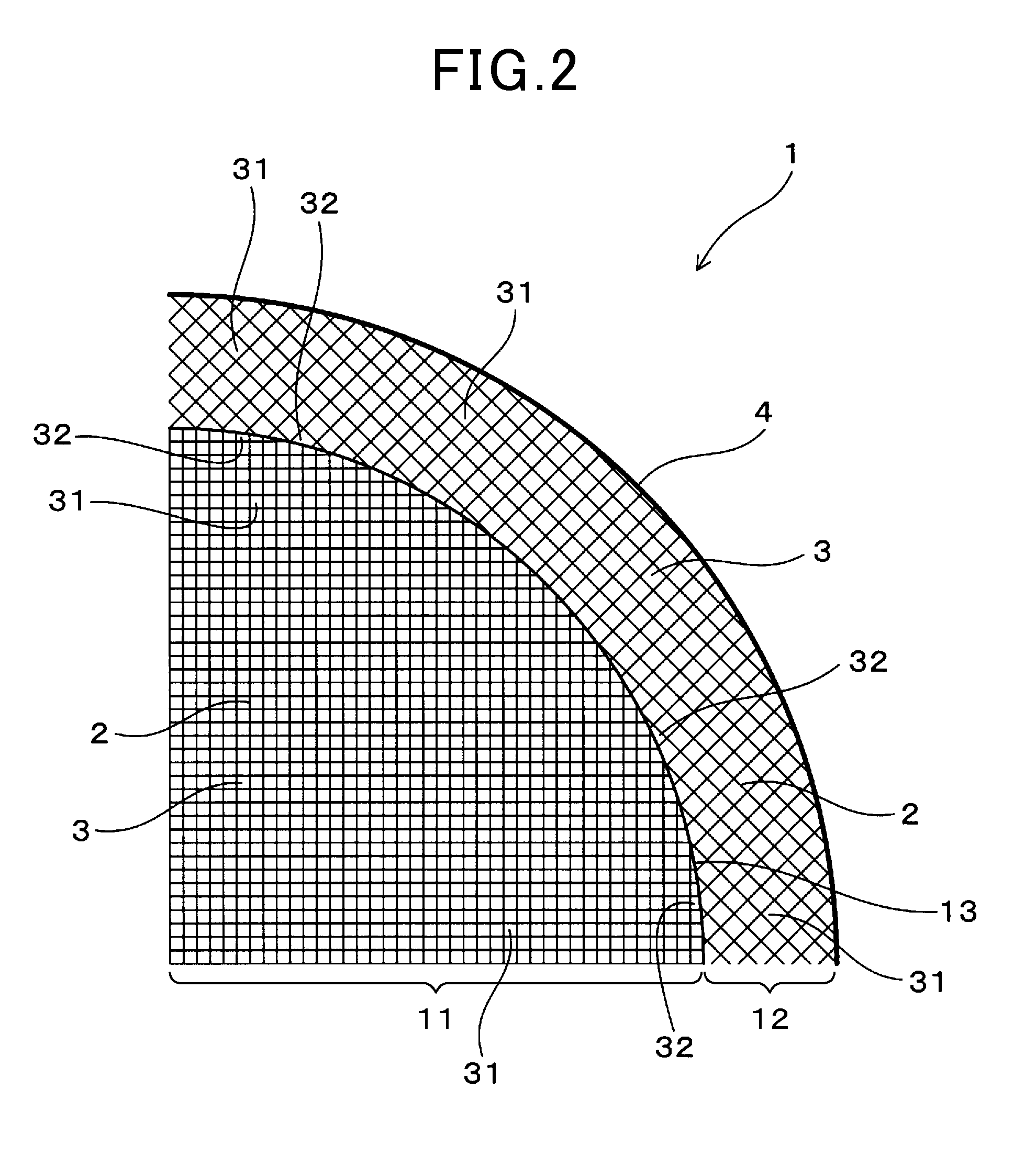Honeycomb structural body
a technology of honeycomb and structural bodies, applied in the direction of machines/engines, separation processes, transportation and packaging, etc., can solve the problems of deformation and breakage of cell walls and boundary partition walls, cell walls near imperfectly shaped cells, and the possibility of deformation and breakage of noble metals, etc., to prevent external stress, prevent the generation of shape deformation, and improve the effect of strength
- Summary
- Abstract
- Description
- Claims
- Application Information
AI Technical Summary
Benefits of technology
Problems solved by technology
Method used
Image
Examples
embodiments
[0041]In a honeycomb structural body 1, cells 3 formed in a central section 11 and cells 3 formed in an outer peripheral section 12 contain imperfectly shaped cells 32. The imperfectly shaped cells are in contact directly with a boundary partition wall 13. The boundary partition wall 14 divides the honeycomb structural body 1 into two sections, i.e. the central section 11 and the outer peripheral section 12. The imperfectly shaped cells 32 are different in shape from normal cells 31. The normal cell 31, i.e. the perfectly shaped cell 31 has a predetermined shape and a predetermined length, for example, a square-like shape, a hexagonal-like shape, etc. surrounded by the partition walls only. That is, each of the imperfectly shaped cells is surrounded by the boundary partition wall 13 in addition to the cell walls 2. As previously described, the imperfectly shaped cell 32 is different in shape from the normal cell 31 (or the perfectly shaped cell).
[0042]In the honeycomb structural bod...
first exemplary embodiment
[0045]A description will be given of the honeycomb structural body 1 according to the first exemplary embodiment with reference to FIG. 1 to FIG. 4.
[0046]FIG. 1 is a perspective view showing the honeycomb structural body 1 according to the first exemplary embodiment.
[0047]As shown in FIG. 1, the honeycomb structural body 1 according to the first exemplary embodiment has the cell walls 2 arranged in a lattice-like shape and a plurality of the cells 3. Each of the cells 3 is surrounded by the cell walls 2. In a cross section in a direction which is perpendicular to an axial direction X of the honeycomb structural body 1, the central section 11 and the outer peripheral section 12 are formed. The central section 11 contains a central axis of the honeycomb structural body 1. The outer peripheral section 12 is lower in a cell density than the central section 11. The outer peripheral section 12 surrounds the central section 11 through the boundary partition wall 13. That is, the boundary p...
second exemplary embodiment
[0090]A description will be given of the second exemplary embodiment with reference to FIG. 6.
[0091]The second exemplary embodiment detected the relationship in an opening area of an opening section of the imperfectly shaped cells 32 and the clogged cells generated in the cells 2 of the honeycomb structural body 1.
[0092]The second exemplary embodiment produced a honeycomb structural body containing imperfectly shaped cells in which an opening section of each of the imperfectly shaped cells has a different opening area. Further, the opening section of each of the imperfectly shaped cells was not plugged, i.e. is open. Further, the second exemplary embodiment detected the generation of cells clogged by the catalyst by using a catalyst slurry having a low viscosity and a catalyst slurry having a high viscosity. The catalyst slurry and the catalyst slurry contained catalyst such as noble metal.
[0093]The produced honeycomb structural body basically had the same structure of the honeycomb...
PUM
| Property | Measurement | Unit |
|---|---|---|
| thickness | aaaaa | aaaaa |
| thickness | aaaaa | aaaaa |
| thickness | aaaaa | aaaaa |
Abstract
Description
Claims
Application Information
 Login to View More
Login to View More - R&D
- Intellectual Property
- Life Sciences
- Materials
- Tech Scout
- Unparalleled Data Quality
- Higher Quality Content
- 60% Fewer Hallucinations
Browse by: Latest US Patents, China's latest patents, Technical Efficacy Thesaurus, Application Domain, Technology Topic, Popular Technical Reports.
© 2025 PatSnap. All rights reserved.Legal|Privacy policy|Modern Slavery Act Transparency Statement|Sitemap|About US| Contact US: help@patsnap.com



